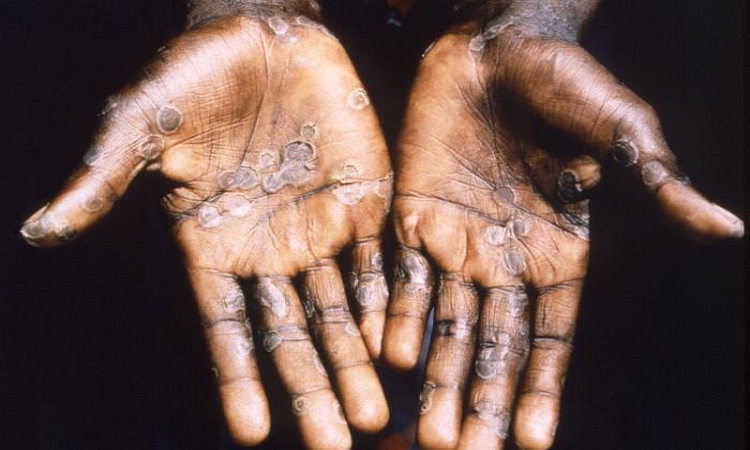Moneypox 2022 Outbreak
An ongoing outbreak of monkeypox was confirmed on 6 May 2022, beginning with a British resident who, after travelling to Nigeria, presented symptoms consistent with monkeypox on 29 April 2022. The resident returned to the United Kingdom on 4 May, creating the country’s index case of the outbreak.
On the 13th of May 202, we saw another case of the virus – which is similar to smallpox, but not quite as deadly. The latest out break has been traced back to a traveller from Nigeria, who tested positive for the disease after arriving in England. As of writing this the total number of infections in the UK hit 57 and counting. This outbreak is not isolated to the UK.
There have been a few outbreaks of monkeypox, and the fear of an outbreak is a real possibility. According to the Centers for Disease Control, “the first human case of monkeypox was recorded in 1970 in the Democratic Republic of Congo during a period of intensified effort to eliminate smallpox. Since then, monkeypox has been reported in humans in other central and western African countries.” The initial 2022 outbreak in Nigeria has since risen to 113 recorded cases, and so far seven of those infected have since passed away.
Who is being affected?
According to researchers the latest cases may be the first-time transmission of monkeypox through sexual contact has been documented, but this has not been confirmed, and in any case it is close contact that matters.
There is no evidence that it is a sexually transmitted virus, such as HIV. It’s more that here the close contact during sexual or intimate activity, including prolonged skin-to-skin contact, contact with bedding or towels carrying the virus may be some key factors during transmission.
The UKHSA is advising gay and bisexual men, as well as other communities of men who have sex with men, to look out for unusual rashes or lesions on any part of their body, in particular their genitalia. “Anyone with concerns that they could be infected with monkeypox is advised to make contact with clinics ahead of their visit,” the UKHSA says.
So, what is Monkeypox?
Monkeypox virus is an orthopoxvirus that causes a disease with symptoms similar, but less severe, to smallpox. While smallpox was eradicated in 1980, monkeypox continues to occur in countries of central and west Africa. Two distinct clade are identified: the west African clade and the Congo Basin clade, also known as the central African clade.
Monkeypox is a zoonosis: a disease that is transmitted from animals to humans. Cases are often found close to tropical rainforests where there are animals that carry the virus. Evidence of monkeypox virus infection has been found in animals including squirrels, Gambian poached rats, dormice, different species of monkeys and others.
Monkeypox kills approximately 10% of those that are infected, and it can be an irritating and painful disease that causes a fever and a blistering rash, that can form all over the body. It would be understandable to assume that this is a disease that comes from monkeys, but in actual fact, while they can carry it and pass it on, rodents and squirrels are considered the biggest carriers of the disease – with the CDC confirming that “African rodent species are suspected to play a role in transmission”.
How is Monkeypox spread?
Bites and scratches from infected wild animals are the sources of this disease, but once it has spread to a human, others can be infected through the air via coughs and sneezes, through contact with the fluid from sores or shared through infected materials. However, it’s important to keep in mind that the disease does not spread easily between people.
According to the NHS, once somebody has been infected with the disease, they will initially suffer from fever symptoms for between 1 to 5 days, before a rash develops – usually on the face. That rash can then spread to other parts of the body, and other symptoms, such as headaches, muscle aches, exhaustion and swollen lymph nodes, can be experienced.
Monkeypox Symptoms
- Infections start out with flu-like symptoms (for more on flu-like symptoms check out our other blog on the topic Stages of the flu – FluCamp).
- Swollen lymph nodes.
- Fluid filled bumps on the skin, mostly found on the face and extremities, including the soles of feet and palms of the hands.
Infections usually last about 2-4 weeks and there is an incubation period of often around 1-2 weeks before symptoms appear.

Is Monkeypox dangerous?
Although news of the disease is appearing in the media lately, medical professionals are keen to reiterate that the public should not be worried with regards to monkeypox. The transmission rate from person to person is very low; on average, an infected person will pass it on between 0 to 1 time, which means there is little chance for the disease to spread extensively.
However, if you do have concerns regarding being infected or have been in contact with someone that has been infected, we always recommend seeking the advice of a qualified health professional.
Is there a Monkeypox vaccine?
At this time, there are no specific treatments available for monkeypox infection, but monkeypox outbreaks can be controlled. Smallpox vaccine, cidofovir, ST-246, and vaccinia immune globulin (VIG) can be used to control a monkeypox outbreak. Interestingly, the smallpox vaccine is also effective when given up to four days after exposure to monkeypox, in what experts call post-exposure prophylaxis.
What can be done to prevent Monkeypox?
Prevention depends on decreasing human contact with infected animals and limiting person-to-person spread. You can prevent monkeypox virus by: Avoiding contact with infected animals (especially sick or dead animals). Avoiding contact with bedding and other materials contaminated with the virus. As always best measures to prevent illnesses are to wash your hands regularly and only eat meat that has been thoroughly cooked.
For more information on monkeypox, we found this video incredibly useful when writing this blog and credit to the team from SciShow. https://www.youtube.com/watch?v=Y9bjHNpqOro
















